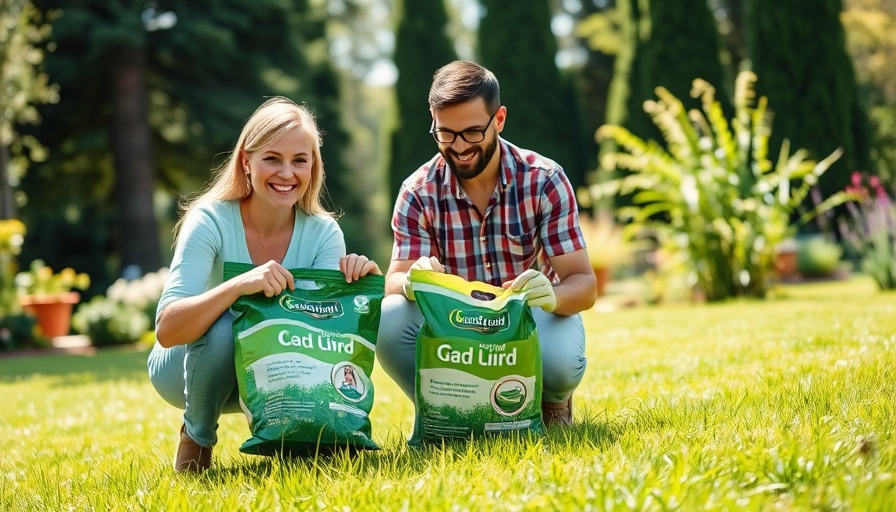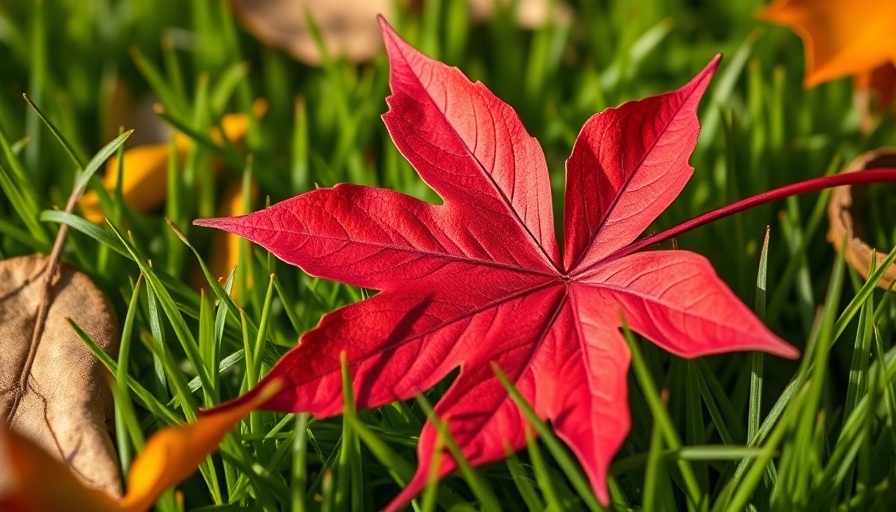
Is More Water Always Better for Your Lawn?
Many homeowners believe that drowning their grass in water is the key to a lush lawn. Contrary to this popular belief, overwatering can harm your yard just as much as neglecting it. A healthy lawn typically requires about an inch of water each week, which can include rainfall. The secret lies in watering deeply and infrequently. This approach encourages grass to develop deep roots, making it more drought-resistant and robust against heat.
Why Short Grass is Not the Ideal Choice
Another myth that needs debunking is the idea that shorter grass means a healthier lawn. Shortening the grass too much, an act known as "scalping," can severely stress your lawn. The result? A greater vulnerability to disease, pests, and invasive weeds. Keeping your grass at a height of 2.5 to 3 inches not only enhances its appearance but also promotes healthier growth and resilience.
Fertilization Timing: More than Just Spring
Many people assume that fertilization should only occur in spring. While spring is an important time for feeding your lawn, many experts recommend fall fertilization as well. By nourishing the grass in the fall, you enhance root development, preparing it for winter and setting the stage for vibrant growth in the spring. This approach is essential for a robust lawn throughout the year.
The Truth About Grass Clippings
Concerned about leaving grass clippings on your lawn? It’s a widespread myth that they contribute to thatch buildup. In reality, grass clippings act as a fantastic source of nitrogen when left to decompose on the lawn. To benefit from this natural fertilizer, make sure the clippings are small and spread evenly to maintain air circulation.
Timing for Seeding: A Critical Factor
When it comes to overseeding, timing is everything. Different types of grass thrive in varying conditions. For cool-season grasses, late summer to early fall is ideal due to warmer soil temperatures and adequate moisture. Conversely, warm-season grasses do best when seeded in late spring or early summer. Understanding when to seed can dramatically influence your lawn’s health and appearance.
Seasonal Lawn Care: Planning for the Year
Being knowledgeable about these myths can help homeowners devise an effective seasonal yard care plan. From preparing for spring through fertilizing, fall leaf removal, and winter plowing readiness, creating a year-round strategy ensures that your lawn can handle weather changes and seasonal challenges. A proactive approach can turn your yard from dull and dead to lush and lively year-round.
Common Misconceptions in Lawn Care
Understanding and debunking these common misconceptions can transform how you maintain your lawn. Many homeowners feel overwhelmed by conflicting advice, making lawn care a dreaded task instead of an enjoyable one. This guide is designed to provide clarity and confidence in your lawn care routine. Embracing these truths will empower you to make informed choices that nurture your grass while saving time and effort in the process.
What’s Next? Taking Action on Your Lawn Care
If you’re ready to elevate your lawn care practices, now is the time to take action. Armed with these insights, you can confidently implement effective strategies tailored to your yard’s needs. Consider consulting with professionals for seasonal yard and property care; they often provide valuable resources and guides to help you stay ahead of weather changes and potential challenges.
With the right approach and expert advice, achieving the lawn of your dreams is within reach. Ready to get started? Request a free quote today and take the first step toward a healthier, greener lawn!
 Add Row
Add Row 
 Add
Add 


 Add Row
Add Row  Add
Add 
Write A Comment